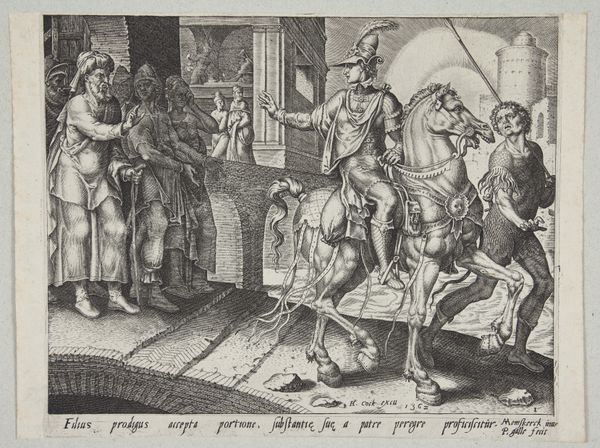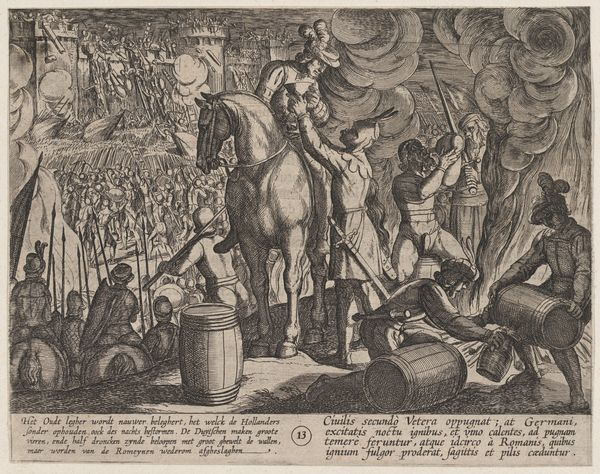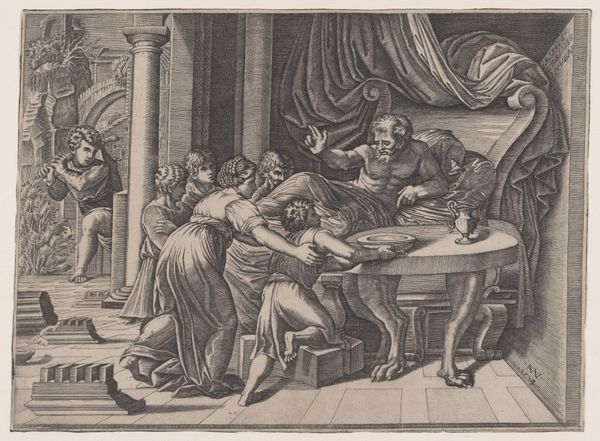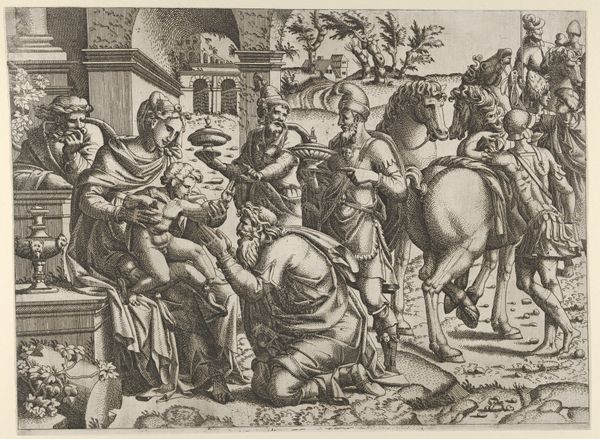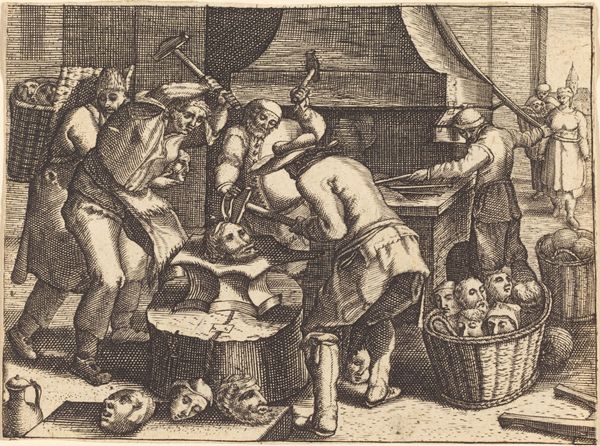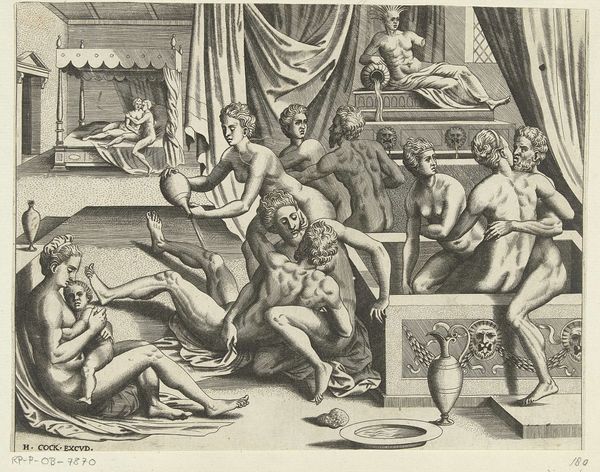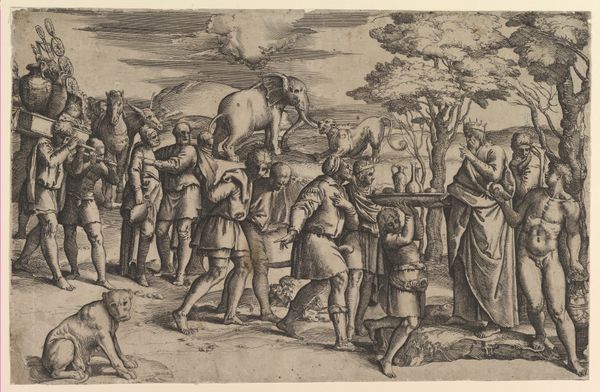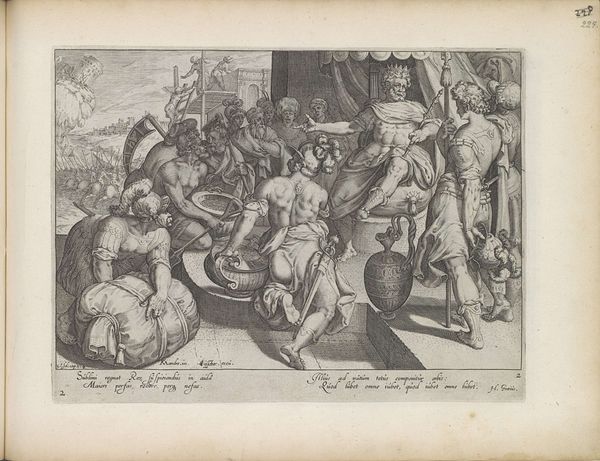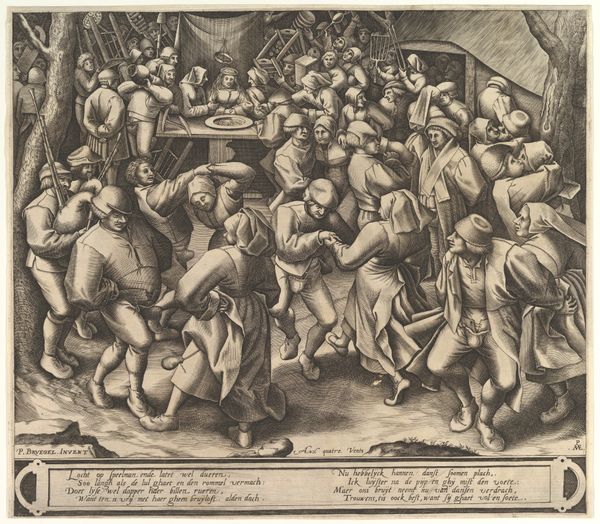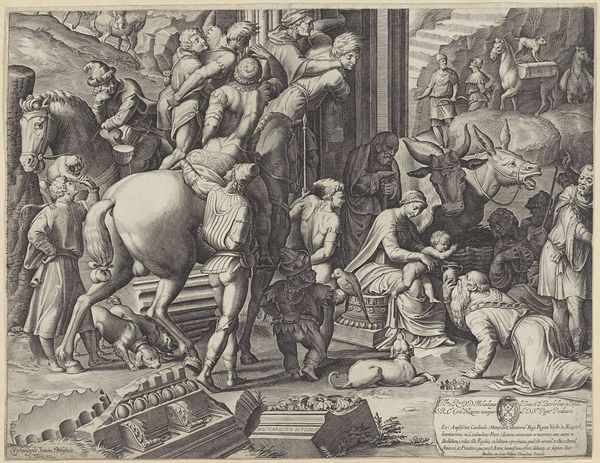
Brennus throwing his sword on the scales before Camillus 1540 - 1556
0:00
0:00
drawing, print, engraving
#
drawing
#
pen drawing
# print
#
pen illustration
#
pen sketch
#
figuration
#
soldier
#
horse
#
history-painting
#
engraving
Dimensions: Sheet (trimmed): 11 1/4 × 15 3/8 in. (28.6 × 39.1 cm)
Copyright: Public Domain
Editor: We're looking at Léon Davent's "Brennus throwing his sword on the scales before Camillus," a print from roughly 1540 to 1556. It depicts a bustling scene with figures in classical armor, seemingly haggling over scales. The mood feels tense. What historical context do you bring to this image? Curator: This image offers a fascinating lens through which to examine the intersection of power, justice, and cultural narrative. Davent depicts a pivotal moment in Roman history, highlighting the Gaul's audacious demand for more tribute and Rome's eventual assertion of dominance. How does this scene speak to the construction of identity, not just for Rome, but also for the so-called "barbarian" Gaul? Editor: It's interesting to consider how the Gaul's image might be shaped. I'd focused on the Roman's power displayed through their armor. Curator: Exactly! The narrative emphasizes Roman virtue in the face of barbarian greed. But whose perspective are we seeing this from? Early prints like this served as powerful propaganda tools, solidifying national identities and justifying military actions. Think about the power dynamics at play – the colonizer versus the colonized, and how that translates into visual language. Consider how gender might fit into this depiction of conquest? Editor: Gender... Hmm. I'm not sure. The focus seems very masculine – soldiers, battles. Is there a feminine counter-narrative to explore? Curator: Precisely! Where are the women? Are they victims, spoils of war, or entirely absent? Their absence is telling. Their stories are silenced, reinforcing the patriarchal structures underpinning this historical narrative. This scene, though seemingly about military strength, is deeply entrenched in ideologies of masculinity and dominance. This visual absence points to the silencing of female perspectives throughout history and how the narrative emphasizes patriarchal power structures. Editor: This makes me rethink how I initially interpreted the print. I now see it as less about straightforward historical record and more about how power dynamics are visually constructed and reinforced. Thanks! Curator: Indeed! Engaging with art critically involves dissecting the layers of social, political, and cultural influence woven into its fabric, and constantly asking, “Whose story is being told, and whose is being omitted?”
Comments
No comments
Be the first to comment and join the conversation on the ultimate creative platform.

